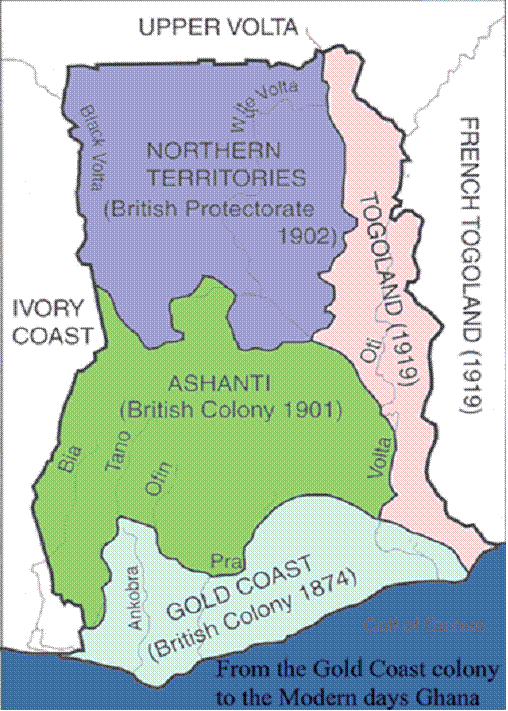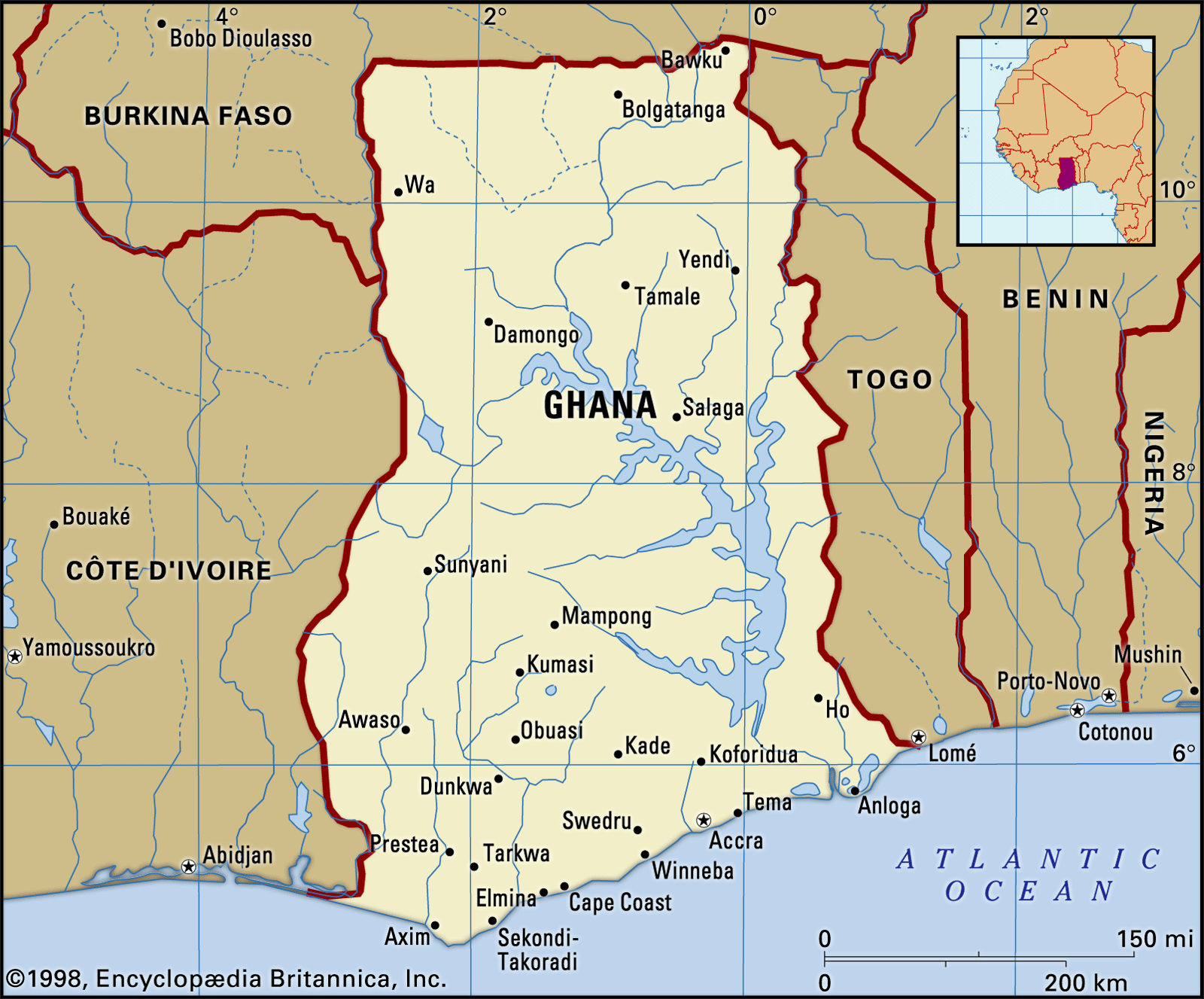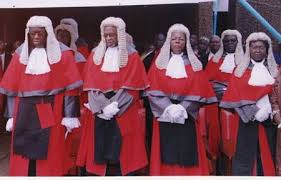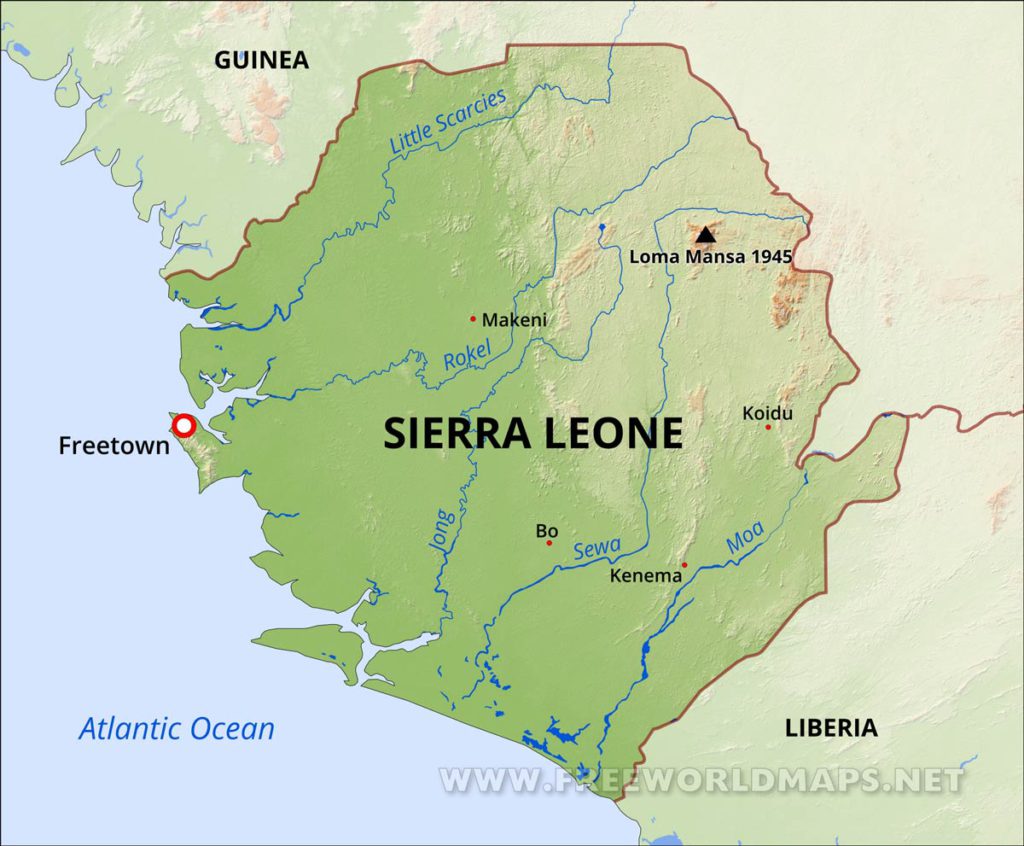My September 12, 2019 posting – the day before yesterday – was about an old case of ritualistic murder in Ghana (then still called Gold Coast colony), ‘A chieftaincy dispute and ritual murder in Elmina, Ghana, 1945-6’.
I have been following ritualistic murders and related incidents in Ghana for well over ten years now and reported on these crimes on a special page of my website Liberia’s Past and Present, called ‘ritual murders, not only in Liberia‘. The oldest case reported on the relevant Ghana page of the website dates from March 9, 2009 and although the main theme of the article concerned is quite different – it deals with the question who is to be credited for the foundation of ‘Ghana’ and the naming of the new republic which succeeded to the English colony of Gold Cost – my attention was drawn to a paragraph dealing with an old ritualistic murder case.
It reads as follows:
“Among the five causes of the deterioration in public confidence identified by the Colonial Office, was what they described as “the bitterness of the group of politicians, led by Dr. J.B. Danquah, over the hanging of the Kibi murderers”. According to a Colonial Office report on the disturbances in the Gold Coast, “[t]he Kibi affair changed the pattern of Gold Coast politics. A number of Kibi people were tried for the ritual murder at the time of the funeral, in 1944, of Nana Sir Ofori Atta, Omanhene of Akyem Abuakwa. They were defended in a notoriously long trial by many lawyers led by Dr. J.B. Danquah and employed by their relatives. The bitterness of this family over the trial and the conviction of some among their relatives as murderers resulted in their instituting an uncompromising political campaign against the Governor and the Government. This group subsequently formed the hard core of the extreme nationalists who in August 1947 founded the United Gold Coast Convention”.
The original article is presented below.
One reason why I post it here is to demonstrate that ritualistic killings are no new phenomenon in Ghana. Another reason is to show that the colonial authorities acted against these inhuman crimes. The third and last reason is to draw attention to the fact that ritualistic killings have never been eradicated in Ghana. The main question which immediately arises is : Why?
This will be the subject of another posting. (webmaster FVDK)

Published: March 9, 2009
By: Ekow Nelson – GhanaWeb
President Evans Atta Mills’ proposal to honour our first president Dr. Kwame Nkrumah has generated a lot of debate on both sides of Ghana’s historical political divide. Apart from a minority who are opposed to another public holiday, the divisions are over whether the proposed Founder’s Day should be bestowed only on Nkrumah or be made Founders’ Day, extended to include the so-called ‘Big Six’ who were arrested after the 1948 riots and disturbances following the shooting and killing of three ex-servicemen.
The argument in favour of extending the President’s proposed honour is predicated on the belief that the arrests of the then leaders of the U.G.C.C. and the establishment of the Commission of Enquiry into the 1948 riots under the chairmanship of Aiken Watson Q.C., was a watershed moment in our country’s history and marked the beginning of the final journey toward independence. But is this credible?
From the end of World War II until the appointment of the Watson Commission, there was a gradual but palpable deterioration in public confidence in the Government of the Gold Coast, among other things, because of soaring inflation and growing shortages of consumer goods. Farmers were dissatisfied with the policy of cutting-out cocoa trees ravaged by the swollen-shoot disease with no compensation. Ex-servicemen who had fought in World War II for ‘King and country’ had only been awarded meagre gratuity and were experiencing similar hardships to the general populace. Neither the chiefs in the Joint Provincial Council, nor the elite political class, championed the cause of the growing mass of disaffected people and it fell upon Nii Kwabena Bonnne II, Osu Alata Mantse, to lead the agitation against increasing economic hardship and in particular, inexorable rises in the prices of consumer goods.
Just over a month after Nkrumah’s arrival in the Gold Coast in 1947, this growing discontent found expression in the boycott of mostly foreign-owned trading firms organized by Nii Kwabena Bonnne on 26th January 1948. The boycott continued for a month while its leaders negotiated price reductions with the government and the trading firms – the Association of West African Merchants (AWAM). However, on 28th February 1948 when the boycott was due to be called off, ex-servicemen set-off on a march to the Castle to present a petition to the Governor. In the ensuing kerfuffle, the British officer in charge of Castle security Superintendent Colin Imray gave orders to open fire, killing three ex-servicemen – Sgt. Adjetey, Private Odartey Lamptey and Corporal Attipoe – and injuring many others in the process.
News of the shooting sparked days of rioting in Accra by alr eady angry crowds incensed by the high price of food, which they blamed on the greed of foreign merchants. Shops and offices owned by foreigners were attacked, looted and the violence soon spread to other towns. Faced with widespread disorder, Governor Sir Gerald Creasy declared a state of emergency. Troops were called out while police arrested the ‘trouble makers’. Leaders of the U.G.C.C. – the so-called Big Six: J. B. Danquah, Ofori Atta, Akufo Addo, Ako Adjei, Obetsebi Lamptey and Kwame Nkrumah – were arrested and flown to the Northern Territories where they were detained for six weeks.
While it is true that both Kwame Nkrumah and Dr. Joseph Boakye Danquah addressed the ex-servicemen at a rally in Accra on 20th February 1948 where their petition to the Governor was drawn up, it is clear that the leaders of U.G.C.C. did not anticipate or plan the 1948 riots which was triggered by a combination of public disaffection over rising prices and shortages and the shooting of innocent ex-servicemen whose only crime appears to have been to petition the Governor.
After interrogating the accused the Watson commissioners concluded that Nkrumah was mainly to blame for the disorders. Curiously, the other leaders of the U.G.C.C also blamed Nkrumah for the riots and some, including Obestebi Lamptey and William Ofori-Atta, ransacked his house looking for evidence that he was a communist.
So, isn’t it rather breathtakingly hypocritical that while the U.G.C.C. leadership washed its hands of the 1948 riots and blamed Nkrumah for the disturbances that led to their arrests and earned them the sobriquet of the ‘Big Six’, 52 years on, their supporters wish to claim credit for triggering the process that led to the establishment of the Watson Commission and in consequence, the Coussey Constitutional Commission (from which Nkrumah and the Trades Unions were excluded) and the march toward independence? Without the 1948 riots it is unlikely the constitutional process that paved the way for our independence may have been initiated and the so-called ‘Big Six’ had no role in those events.
The other argument put forward by opponents of President Mills’s proposal is that prior to Nkrumah’s arrival, the U.G.C.C. leadership had started the agitation for self-rule. It is worth, however, examining the motivations behind the establishment of the U.G.C.C. to test this claim.
Among the five causes of the deterioration in public confidence identified by the Colonial Office, was what they described as “the bitterness of the group of politicians, led by Dr. J.B. Danquah, over the hanging of the Kibi murderers”. According to a Colonial Office report on the disturbances in the Gold Coast, “[t]he Kibi affair changed the pattern of Gold Coast politics. A number of Kibi people were tried for the ritual murder at the time of the funeral, in 1944, of Nana Sir Ofori Atta, Omanhene of Akyem Abuakwa. They were defended in a notoriously long trial by many lawyers led by Dr. J.B. Danquah and employed by their relatives. The bitterness of this family over the trial and the conviction of some among their relatives as murderers resulted in their instituting an uncompromising political campaign against the Governor and the Government. This group subsequently formed the hard core of the extreme nationalists who in August 1947 founded the United Gold Coast Convention”.
It is also far from clear that the immediate aim of the movement was to seek independence. In a letter to the Secretary of State for the Colonies Mr Creech Jones in December 1947, Sir Kenneth Bradley, officer administering the Gold Coast, argued that the motivations for the establishment of the U.G.C.C. had much to do with the personal ambitions of its leadership to supplant the Chiefs on the Joint Provincial Council in the power-sharing arrangement with the colonial government.
According Bradley, “one of the [U.G.C.C.’s] immediate aims is to wrest power from the chiefs. Those leading chiefs of the Colony with whom I have discussed the Convention agree that this is the main immediate aim of promoters of the party; and they are somewhat disturbed by the party’s activities. This assessment of the Convention’s present objective is borne out also by the reports of the meetings so far held. None of the leading chiefs of the Colony have been invited to take any part in the framing of the Constitution, nor has any approach been made to the Joint Provincial Council or the Ashanti Confederacy Council.”
While it was clearly a nationalist movement, the U.G.C.C. was not national in its reach, at least until Nkrumah’s arrival four months after its inauguration in Saltpond. As Bradley pointed out, its supporters were mainly in the large coastal towns of Accra, Saltpond, Cape Coast, Sekondi and Kibi the home of Dr Danquah, which was also the mainspring of the movement. The Watson Commission too observed that the “U.G.C.C. did not really get down to business until the arrival of Mr Nkrumah on 16 December 1947” who was singularly responsible for broadening the appeal of the movement across the country.
The role and contribution of U.G.C.C. in the struggle for independence is not in doubt but to hoist it, almost exclusively, as the harbinger organisation for Ghana’s independence is to overstate its case. It was neither the first nationalist movement in neither the Gold Coast nor the last; indeed it supplanted the Aborigines’ Rights Protection Society which until then championed the interests of natives of the colony. Like the Aborigines’ Rights Protection Society, it too, was supplanted – by the Nkrumah’s Convention People’s Party – when it [the U.G.C.C.] became a “spent political force” (as the some founding members of the U.G.C.C. said of the Society in 1947). Ghana’s struggle for independence began long before the U.G.C.C. and the Big Six and there is a case for honouring all of those like Joseph Casley-Hayford, John Mensah Sarbah Nii Kwabena Bonnne II and William Essuman Gwira (Kobina) Sekyi, who have contributed immensely to our nationhood. But are we to believe that the likes of Obetsebi Lamptey, Ako Adjei, Edward Akuffo-Addo and William Ofori-Atta, their contributions notwithstanding, are more deserving than these stalwarts of 19th and 20th century Gold Coast only because they were part of the ‘Big Six’ arrested after the 1948 riots? No!
The final leg of the argument against declaring 21st September Founder’s Day is that Nkrumah was not the founder of Ghana. If anything, in addition to his other immense intellectual and political achievements, Dr. J.B. Danquah was founder by virtue of proposing we adopt the name Ghana, his supporters argue. It is true that Dr. J.B. Danquah demonstrated in his paper “The Ghana Hypothesis” that the inhabitants of the then the Gold Coast were descended from the first of the three major empires of Western Sudan. In a Colonial Office despatch in 1949, the officer administering the government then observed that “Nkrumah’s axial fantasy – Ghanaland – [had] been cribbed from Dr. Danquah. With some malversation of history and considerable recourse to mystical interpretation, Dr. Danquah demonstrated some time ago that the Gold Coast is the ancient state of Ghana. The romantic notion was enthusiastically received and much elaborated by local bards but it was Mr. Nkrumah who transformed it into a political conception”. In other words, Nkrumah could have chosen not to take inspiration from Dr. Danquah’s hypothesis but he complimented him by making what was a vague and ropey conception the reality that became the motion of independence tabled on August 3rd 1956. However, when the time came for Dr. Danquah and Nkrumah’s opponents to make the former’s hypothesis a reality, they spurned the opportunity. In a memorandum on 29th August 1956 to the United Kingdom cabinet, the then Secretary of State for Colonies described the events leading up to the motion: “The new Legislative Assembly was opened on 31st July, and on 3rd August the Government introduced its expected motion calling for independence within the Commonwealth. All the Opposition members boycotted the debate …and the motion was passed nem con. If there had been a vote, the Opposition could not have mustered more than 32 votes against the Governments 72. I must regard the motion therefore as having been passed by a “reasonable majority.” . The full text of the motion reads as follows: “that this Assembly do authorise the Government of the Gold Coast to request Her Majesty’s Government in the United Kingdom, as soon as practicable this year, to procure the enactment by the United Kingdom Parliament of an Act to provide for independence of the Gold Coast as a sovereign and independent State within the Commonwealth under the name of Ghana.|”” That motion was not drafted by Dr. Danquah; indeed as noted Dr. Danquah’s party boycotted the debate to request independence and to change our name from the Gold Coast to Ghana. He may have borrowed the idea from Dr. Danquah but it was Nkrumah who ‘christened’ the Gold Coast, Ghana.”
The arguments against President Mills’ proposition from the UP/NPP side is not credible, especially when one comes to think of the fact that they presided over the golden jubilee celebrations and had eight years in which they could have honoured the ‘Big Six’ beyond having their portraits put in the new currency notes. Now they are attempting opportunistically to gate-crash President Mills’s bash for Nkrumah with rather weak and hollow arguments.
The current geographic borders of Ghana which integrates parts of what was Trans-Volta Togoland for example was negotiated by Nkrumah. It was Nkrumah who stopped separatists for dismembering and balkanizing the country as we know it. If the so-called Big Six had their way in 1956 Ghana would not look anything like what we know today. In its administrative structure, organisation and physical boundaries, the idea of Ghana as we know it today is by and large Nkrumah’s ‘creation’.
Source: Why dilute Mills’ Founder’s Day with Founders’ Day?





